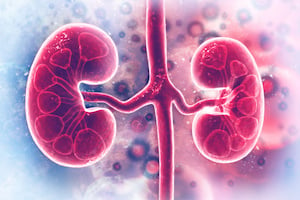Kidney Care Community Speaks Out on ESRD Treatment Choices Model
 The Centers for Medicare & Medicaid Services (CMS) received 330 responses to its proposed ESRD Treatment Choices model. The model, according to CMS, encourages greater use of home dialysis and kidney transplants for Medicare beneficiaries with ESRD.
The Centers for Medicare & Medicaid Services (CMS) received 330 responses to its proposed ESRD Treatment Choices model. The model, according to CMS, encourages greater use of home dialysis and kidney transplants for Medicare beneficiaries with ESRD.
“Both of these modalities have support among healthcare providers and patients as preferable alternatives to in-center hemodialysis, but utilization has been less-than in other developed nations,” CMS notes.
ESRD Treatment Choices will provide financial incentives of up to 3% to dialysis providers and nephrologists who increase the number of patients using home dialysis or raise their rates of kidney transplantation.
The plan is set to be implemented in January, but professional associations in the kidney care community and dialysis providers and patients groups have expressed criticism of the proposal. This criticism joins that set forth by the Medicare Payment Advisory Commission (MedPAC).
In a letter sent to CMS Administrator Seema Verma, MedPAC Chair Francis J. Crosson, MD, writes: “We believe the proposed measurement of home dialysis and kidney transplantation rates in the PPA [performance payment adjustment] lack sufficient validity to serve as the basis for the payment incentives. For both the home dialysis and transplant measures, we have specific concerns about the reliability of the measurement; the comparison-to-control-group benchmarks and scoring method; the risk-adjustment method; and, in certain instances, the alignment of incentives for participants.”
Of the financial incentives, Fresenius wrote: “It is clinically irresponsible to set achievement targets that are arbitrary and unsupported by evidence and performance data. Setting targets that are reflective of experience in other countries with dissimilar regulatory and payment structures is unrealistic. This is especially true given the high penetration of staff-assisted home dialysis in other countries compared to the near absence of those models in the U.S. due to regulatory restrictions.”
The Renal Physicians Association, the American Society of Nephrology and the National Kidney Foundation all said the plan implementation was premature, proposing instead that it be implemented in April 2020.
The increase of home dialysis patients could leave in-center staff and patients unprepared for those patients who move back to in-center care because of home dialysis failure, said the American Nephrology Nurses Association (ANNA).
“ANNA fears that the proposed payment model and incentive for home dialysis therapy may stimulate the encouragement of both incident and prevalent ESRD patients to choose home dialysis when they may not be clinically appropriate or ready for this modality leading to a high failure rate,” the organization wrote.




